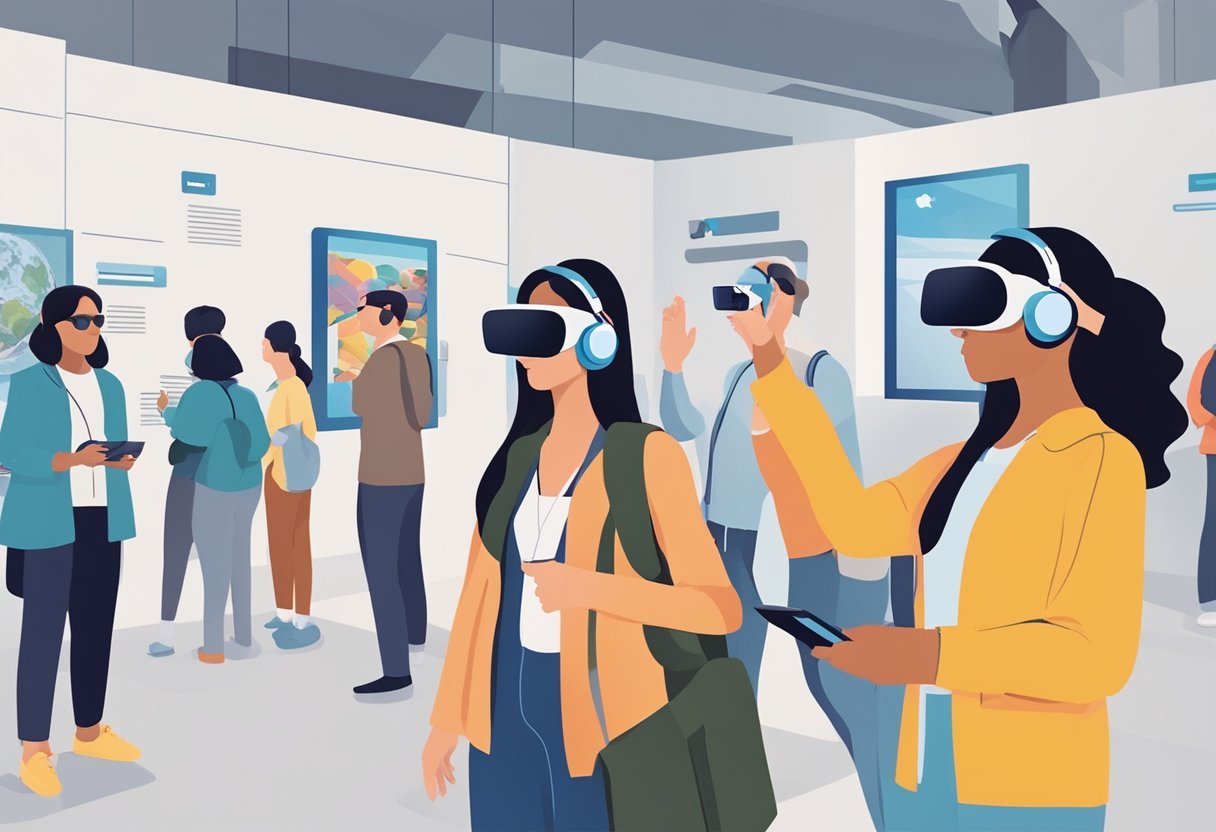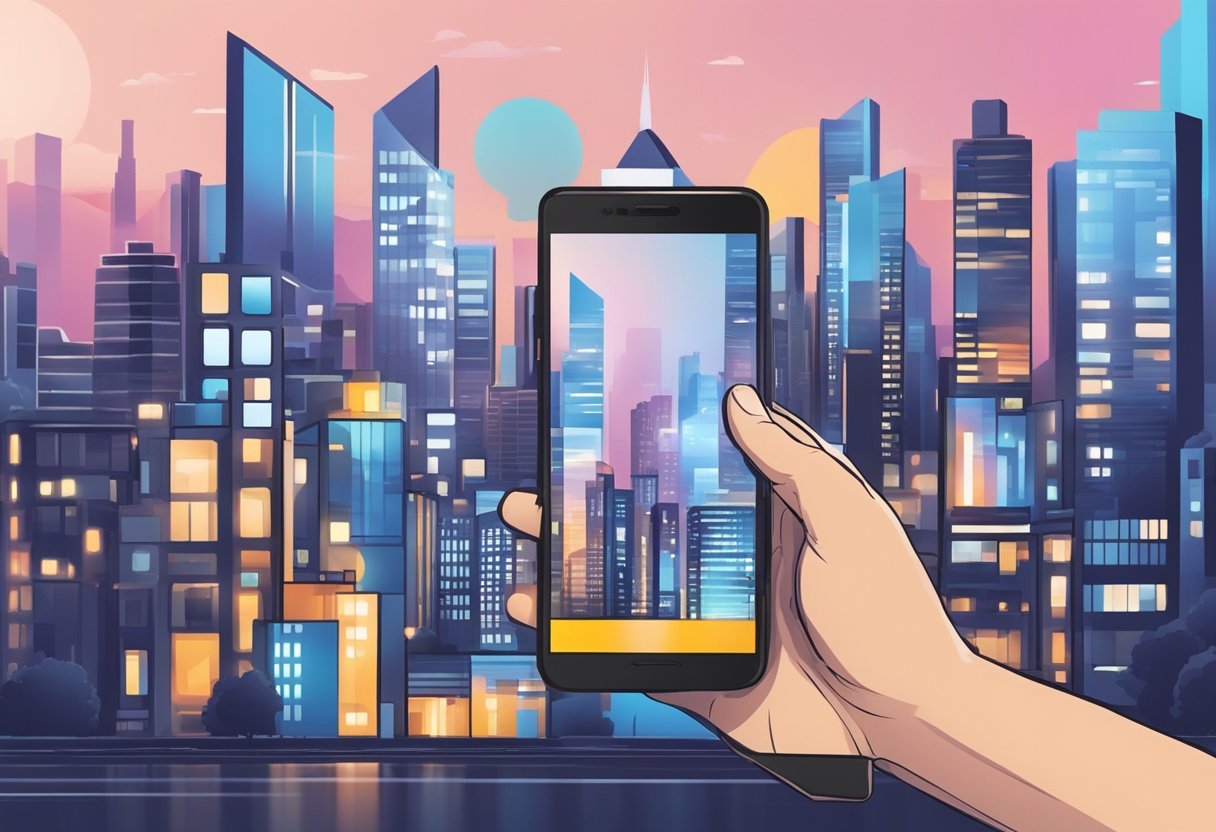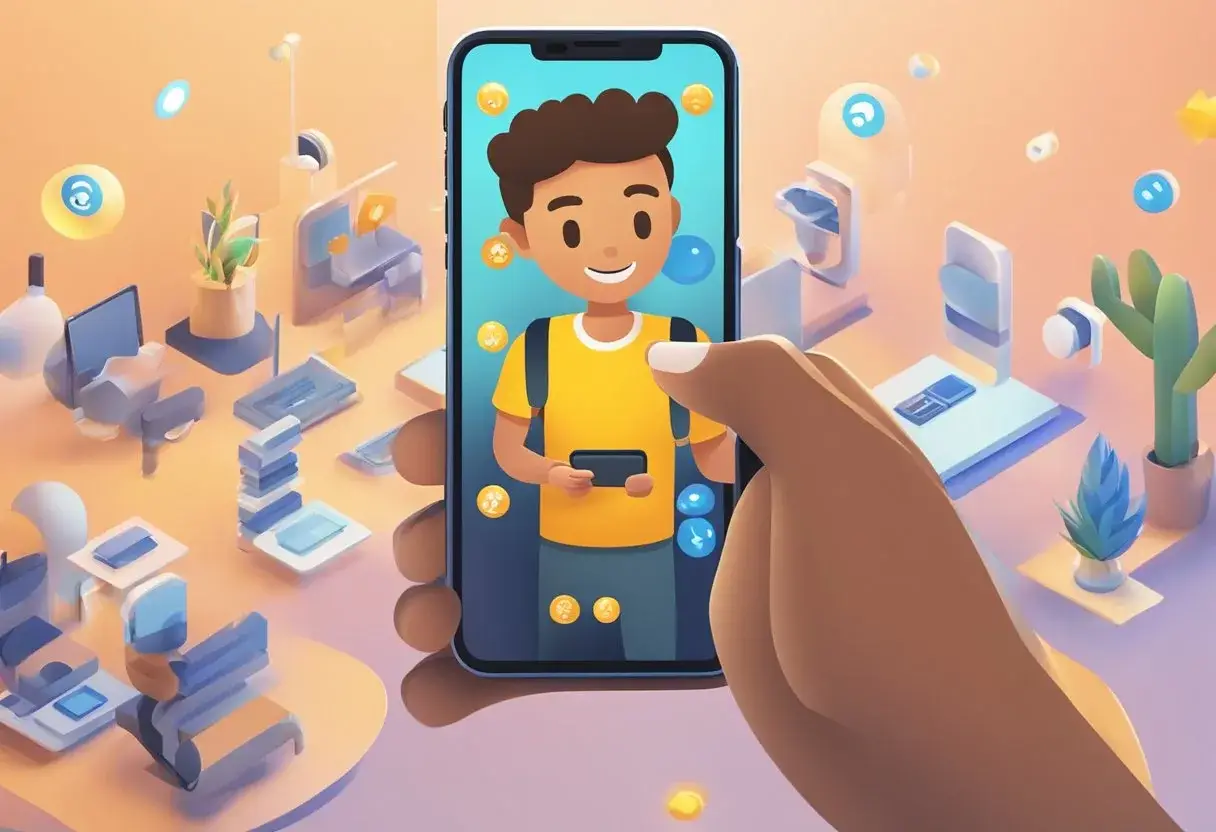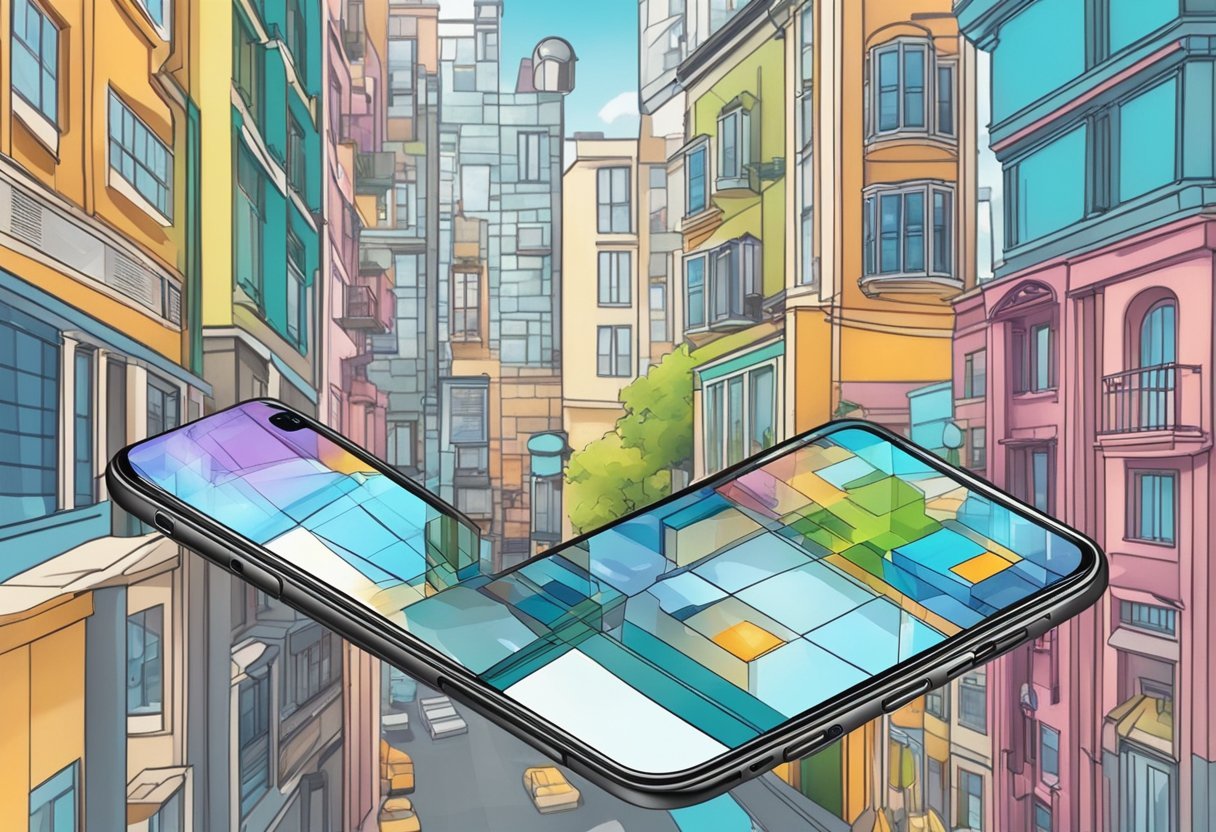When visiting museums, you often find yourself staring at exhibits with little context or explanation. However, with the advent of augmented reality (AR) technology, museums are now able to provide visitors with a more immersive and engaging experience. AR is the process of using technology to superimpose images, text, or sounds on top of what a person can already see. In the context of museums, AR can be used to add explanations, display digital versions of artists, or bring artworks to life with 3D animations. In this blog post, I will discuss the benefits of augmented reality in museums and how AR can enhance user experience in museums.
AR technology has transformed the way museums present and interpret their collections. AR experiences can range from simple overlays that provide additional information about an exhibit, to fully immersive experiences that transport visitors to another time or place. This technology has the potential to not only enhance the visitor experience but also attract a wider audience to museums. With AR, museums can create experiences that are both educational and entertaining, appealing to visitors of all ages and backgrounds.
What is an Augmented Reality Museum
An augmented reality museum is a museum that incorporates augmented reality technology into its exhibits and displays. Augmented reality technology allows visitors to view digital information or objects superimposed on the real world using a smartphone or tablet. This technology has been used to enhance the visitor experience in museums by providing interactive and immersive exhibits that allow visitors to engage with the content in new and exciting ways.
Role of Augmented Reality in Museums
The role of augmented reality in museums has evolved over time. Initially, augmented reality was used to enhance the visitor experience by providing interactive exhibits and displays. However, in recent years, augmented reality has played a more significant role in museums, particularly in the wake of the COVID-19 pandemic.
With the pandemic, museums have had to adapt to new ways of engaging with visitors. Augmented reality technology has allowed museums to provide virtual tours and exhibits, which have been particularly useful for informal learning. This technology has also allowed museums to provide a safe and socially distanced experience for visitors.
Augmented reality technology has also been used to provide a more immersive and interactive experience for visitors, particularly in exhibits that are difficult to access or display. For example, augmented reality has been used to recreate ancient artifacts or historical events, allowing visitors to experience them in a new and exciting way.
Benefits of Augmented Reality in Museums
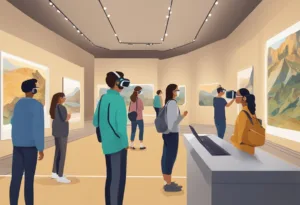
- Enhanced visitor engagement
- Interactive learning experiences
- Accessibility for diverse audiences
- Personalization of museum tours
- Revitalization of historical artifacts
- Increased visitor footfall
- Extended reality beyond physical space
- Improved navigation within museums
- Cost-effective updates and maintenance
- Gamification of education
- Social sharing and digital marketing
- Real-time information and updates
- Multi-sensory experiences
- Support for multiple languages
- Data collection and visitor insights
Enhanced Visitor Engagement
Augmented Reality (AR) transforms the museum experience from passive observation to active participation. By overlaying digital information onto the physical world, AR allows museums to create immersive and interactive narratives that captivate visitors. Through AR, artifacts and exhibits can “come to life,” allowing visitors to see animations, hear stories, or even interact with the exhibits in real-time. This level of engagement keeps visitors interested and invested in the museum content, leading to longer visits and a more memorable experience.
Interactive Learning Experiences
AR in museums offers a hands-on approach to education, turning a visit into a dynamic learning opportunity. Interactive AR features can provide context to exhibits, such as showing a historical figure in their environment or demonstrating how an ancient tool was used.
Accessibility for Diverse Audiences
Museums are utilizing AR to make exhibits more accessible to individuals with disabilities. For instance, AR can provide sign language for the deaf or enhance visual elements for those with vision impairments. By offering alternative ways to experience content, museums ensure that a wider audience can enjoy their offerings, regardless of physical or sensory limitations.
Personalization of Museum Tours
AR enables museums to offer personalized tours that cater to the interests and preferences of individual visitors. Through AR apps, visitors can select topics, themes, or even specific artifacts they are interested in and receive a curated experience. This not only enhances visitor satisfaction but also encourages them to explore the museum in a way that aligns with their personal interests.
Revitalization of Historical Artifacts
With AR, museums can breathe new life into historical artifacts, providing context and relevance to modern audiences. AR can reconstruct historical scenes or show the original use of an object, helping visitors to understand and appreciate the significance of the artifacts. This revitalization can make history feel current and relevant, bridging the gap between past and present.
Increased Visitor Footfall
AR experiences can attract new and repeat visitors. By offering unique, technologically advanced experiences, museums can market themselves as innovative destinations. This can be particularly effective in attracting younger audiences who are looking for more than the traditional museum experience.
Extended Reality Beyond Physical Space
Museums can use AR to extend their reach beyond the confines of their physical space. AR applications can allow visitors to experience exhibits virtually from anywhere, which can be particularly beneficial for those unable to visit in person. This extension of reality broadens the museum’s audience and can even generate interest in future physical visits.
Improved Navigation Within Museums
Navigating large museums can be daunting for visitors. AR can provide interactive maps and directional cues to help visitors find their way around. This not only improves the visitor experience but also ensures that visitors do not miss important exhibits due to poor navigation.
Cost-effective Updates and Maintenance
Traditional museum exhibits can be costly to update and maintain. AR offers a cost-effective solution, as digital content can be updated easily without the need to physically alter exhibits. This allows museums to keep content current and engaging without incurring significant expenses.
Gamification of Education
AR can turn learning into a game, making education fun and engaging. By incorporating elements of play, such as challenges, rewards, and competition, AR can motivate visitors to learn more and engage deeply with museum content.
Social Sharing and Digital Marketing
Visitors can share their AR experiences on social media, providing free marketing for the museum. This word-of-mouth advertising can increase the museum’s visibility and attract new visitors who want to share similar experiences with their own networks.
Real-time Information and Updates
AR can provide visitors with real-time information about exhibits, such as the history, context, or related events. This ensures that visitors have the most up-to-date information and can fully appreciate the significance of the exhibits they are viewing.
Multi-sensory Experiences
AR can engage multiple senses, providing a more immersive experience. By incorporating visual, auditory, and even haptic feedback, AR can make museum visits more impactful and memorable.
Support for Multiple Languages
Museums can use AR to offer content in multiple languages, making exhibits accessible to a broader audience. This is particularly beneficial in regions with high tourist traffic, where visitors may not speak the local language.
Data Collection and Visitor Insights
Museums can use AR apps to collect data on visitor behavior, preferences, and engagement. This information can be invaluable for improving exhibits, designing future experiences, and tailoring marketing strategies to target audiences more effectively.
AR Museum Technology and Applications
Augmented Reality (AR) technology is revolutionizing the museum industry by providing an immersive experience to visitors. AR technology uses smartphones, tablets, and cameras to superimpose digital images on the real-world environment. This technology offers a unique way to engage visitors and enhance their learning experience.
AR technology can be used in a variety of applications within museums. One application is to bring exhibits to life by overlaying digital information on top of physical artifacts. This can provide visitors with additional information about the exhibit, such as historical context or scientific explanations. AR can also be used to create interactive exhibits, where visitors can manipulate digital objects in real-time.
Another application of AR technology in museums is to create virtual tours. Visitors can use their smartphones or tablets to navigate through the museum and view exhibits in a new and exciting way. This can be especially useful for visitors who are unable to physically visit the museum.
AR technology can also be used to enhance educational programs within museums. By using AR technology, museums can create interactive learning experiences that are both engaging and informative. For example, museums can use AR to create scavenger hunts or quizzes that encourage visitors to explore the exhibits and learn more about the subject matter.
AR technology is transforming the museum industry by offering a unique and immersive experience to visitors. By using smartphones, tablets, and cameras, museums can create interactive exhibits, virtual tours, and educational programs that engage and inform visitors. AR technology is a powerful tool that museums can use to enhance the visitor experience and provide a new way to learn about history, science, and culture.
AR Experiences in Museums
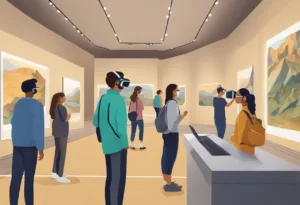
Museums have always been a place for visitors to learn and explore the world’s history and culture. With the advent of augmented reality (AR), museums have been able to enhance the visitor experience by providing interactive exhibits, enhancing visitor engagement, and offering storytelling and contextual information.
Interactive Exhibits and Displays
AR technology in museums has allowed for interactive exhibits and displays that are more engaging and informative than traditional exhibits. Visitors can use their smartphones or tablets to interact with the exhibits and learn more about the objects on display. For example, the “Story of the Forest” exhibit at the National Museum of Singapore uses AR technology to bring the forest to life, allowing visitors to explore the ecosystem and learn about the different species that inhabit it.
Enhancing Visitor Engagement
AR technology has also enabled museums to enhance visitor engagement by providing annotations and additional information about exhibits. Visitors can use their smartphones or tablets to scan exhibits and access additional information, such as videos, images, and audio recordings.
This not only enhances the visitor experience but also provides a more comprehensive understanding of the objects on display. For example, the “Skin and Bone” exhibit at the Smithsonian National Museum of Natural History uses AR technology to provide visitors with a more in-depth understanding of the anatomy of animals.
Storytelling and Contextual Information
AR technology has also allowed museums to provide storytelling and contextual information about exhibits. Visitors can use their smartphones or tablets to access contextual information about exhibits, such as historical context, cultural significance, and artistic techniques.
This not only enhances the visitor experience but also provides a more comprehensive understanding of the objects on display. For example, the National Gallery in London uses AR technology to provide visitors with a virtual tour of the gallery, allowing them to explore the collections and learn about the artists and their works.
AR technology has revolutionized the museum experience by providing interactive exhibits, enhancing visitor engagement, and offering storytelling and contextual information. With the use of AR technology, museums are able to provide visitors with a more immersive and informative experience, making it easier for them to learn and explore the world’s history and culture.
Case Studies
Smithsonian’s Skin and Bones Initiative
The Smithsonian Institution’s Skin and Bones Initiative is a great example of how augmented reality technology can be used to enhance museum exhibits. The initiative uses AR to create interactive experiences that allow visitors to explore the anatomy of various animals. By using AR, visitors can see the internal organs and bones of animals in 3D, which provides a unique and immersive learning experience.
National Museum of Singapore’s Immersive Experiences
The National Museum of Singapore has also utilized augmented reality to create immersive experiences for visitors. One such experience is the AR-enhanced trail, which allows visitors to explore the museum’s galleries and exhibits in a new and interactive way. The AR trail uses a mobile app that visitors can download to their smartphones, which provides them with information and interactive features as they move through the museum.
Art Gallery of Ontario’s ReBlink Project
The Art Gallery of Ontario’s ReBlink project is another great example of how augmented reality can be used to bring museum exhibits to life. The project uses AR to create interactive versions of classic paintings, which visitors can explore in new and exciting ways. By using AR, the project allows visitors to see the paintings in a new light and gain a deeper understanding of the artist’s intent.
These case studies demonstrate the potential of augmented reality technology to enhance museum experiences. By creating interactive and immersive experiences, museums can engage visitors in new and exciting ways, making the learning experience more enjoyable and memorable.
Challenges of AR Museum and Future Directions
Overcoming Technical Limitations
As with any new technology, there are certain technical limitations that need to be addressed in order to fully realize the potential of augmented reality in museums. One of the biggest challenges is the need for high-quality hardware, such as the Microsoft HoloLens, to ensure an immersive and seamless experience for visitors. The development of AR applications and content requires specialized skills and resources, which can be a barrier for smaller museums with limited budgets.
To overcome these challenges, museums can collaborate with technology companies and experts to develop customized AR solutions that are tailored to their specific needs and budget. Investing in training and resources for museum staff can also help to build internal capacity and ensure that AR is integrated effectively into museum operations.
Expanding Accessibility and Inclusivity
Another challenge facing museums is ensuring that AR experiences are accessible and inclusive for all visitors, regardless of their abilities or backgrounds. This requires careful consideration of factors such as language, cultural sensitivity, and accessibility features for visitors with disabilities.
To address these challenges, museums can work with experts in accessibility and inclusion to develop AR experiences that are designed with a diverse range of visitors in mind. This can include providing audio or visual descriptions for visitors with visual impairments, incorporating multiple languages into AR content, and ensuring that AR experiences are culturally sensitive and respectful.
Predictions for AR in Cultural Heritage
Looking to the future, it is clear that augmented reality has the potential to revolutionize the way that museums engage with visitors and preserve cultural heritage. As AR technology continues to evolve, we can expect to see more immersive and interactive experiences that allow visitors to explore historical artifacts and sites in new and exciting ways.
Some predictions for the future of AR in cultural heritage include the development of more advanced AR hardware and software, the integration of AR into virtual and augmented reality platforms, and the use of AR to create more personalized and customized experiences for visitors.
The challenges facing museums in adopting AR technology are significant, but the potential benefits are equally impressive. With careful planning, collaboration, and investment, museums can leverage AR to create engaging and immersive experiences that preserve and promote cultural heritage for generations to come.
Frequently Asked Questions
How can AR be used in museums?
Augmented Reality (AR) can be used in museums to enhance the visitors’ experience. AR technology can be used to overlay digital information on top of the physical exhibits. This allows visitors to see the exhibits in a new light, providing them with additional information and context. AR can also be used to create interactive experiences, allowing visitors to engage with the exhibits in a more immersive way.
What are the advantages of Augmented Reality in museums?
The advantages of Augmented Reality in museums are numerous. AR technology can help museums to create more engaging and interactive exhibits, which can attract more visitors. AR can also provide visitors with a more immersive experience, allowing them to learn and explore in a more dynamic way. AR can help museums to reach a wider audience, including those who may not be able to physically visit the museum.
What is Augmented Reality for historic sites?
Augmented Reality for historic sites is a way to bring history to life through technology. AR can be used to overlay digital information on top of the physical historic sites, providing visitors with additional context and information. This can help visitors to better understand the history of the site and the events that took place there. AR can also be used to create interactive experiences, allowing visitors to engage with the historic site in a more immersive way.
What kind of technology is used to help people interact with a museum exhibit?
There are several technologies that can be used to help people interact with a museum exhibit. These include touch screens, motion sensors, and Augmented Reality (AR). Touch screens allow visitors to interact with digital content related to the exhibit, while motion sensors can be used to trigger interactive elements. AR can be used to overlay digital information on top of the physical exhibit, providing visitors with additional context and information.
How can I make my museum more interactive?
There are several ways to make a museum more interactive. One way is to incorporate technology, such as touch screens, motion sensors, and Augmented Reality (AR). Another way is to create interactive exhibits that allow visitors to engage with the content in a more immersive way. This can include hands-on activities, simulations, and games. Museums can offer guided tours and educational programs to help visitors better understand the exhibits.
How is AI used in museums?
AI (Artificial Intelligence) can be used in museums to enhance the visitor experience. AI can be used to create personalized tours and recommendations based on the visitor’s interests. It can also be used to analyze visitor data to better understand their preferences and behaviors. AI can be used to create interactive exhibits that respond to the visitor’s actions and provide personalized feedback.

